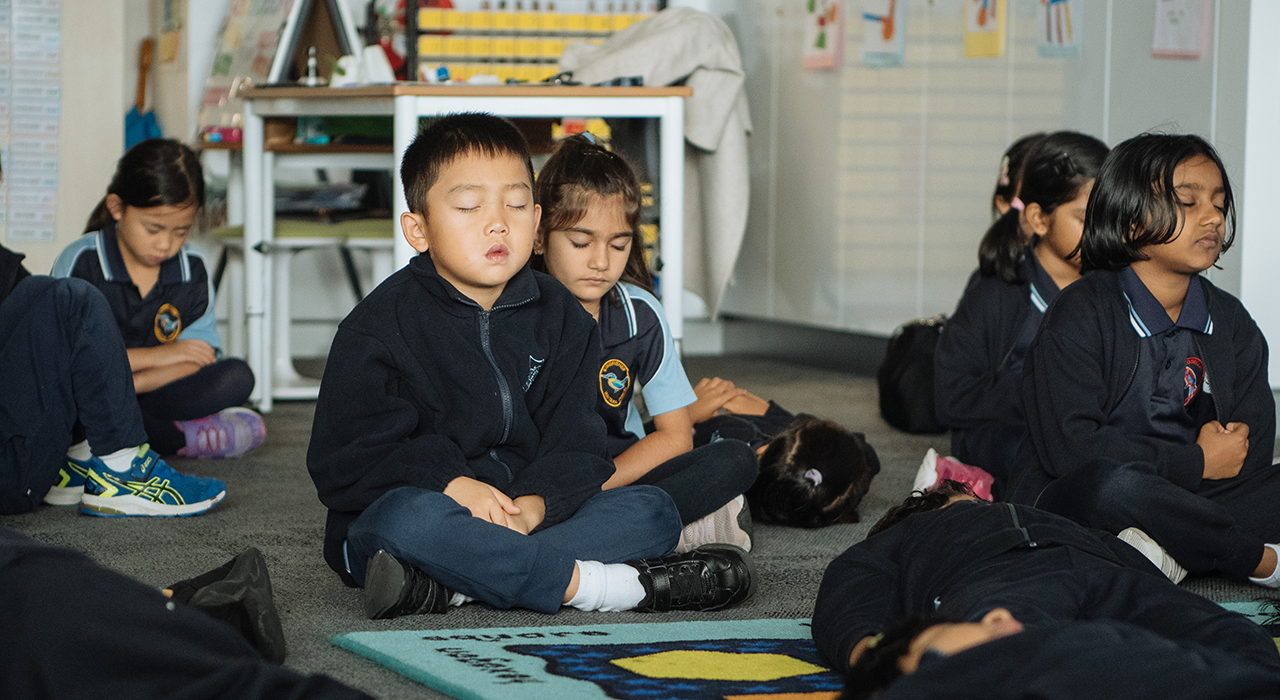“What’s my purpose?”
It’s a question that can feel overwhelming, vague or even daunting. The good news? It doesn’t have to be. Let us break it down for you.
A central pillar of our mental wellbeing, purpose can be thought of as a long-term goal that is supported by our values and strengths. When we live in line with our purpose, we actually experience more joy, a healthier social life and improved wellbeing.
For some, finding purpose comes about organically, while others discover it through deliberate self-reflection and action. Made up of three core components, we’re going to break down how you can find your purpose into understandable, actionable steps.
What actually is purpose, and how does it apply to life?
Purpose can be thought of as the point where your values and strengths support deliberate actions that benefit others in some way, shape or form.
We use our purpose to help us determine:
- How we take care of ourselves
- Who we are
- What we want to become
When we identify these things, we’re able to meaningfully contribute to our communities and the world around us. When we do this, we feel a greater sense of satisfaction and belonging—incredibly important factors to our overall wellbeing.
Reflect on your values
Your values are your biggest motivators of behaviour. They’re the principles, standards and beliefs that help you determine what’s important. They’re what motivate you to live your version of a “best life”.
Deliberately reflecting on your values will help you identify what you really care about. By doing so, you can more easily carve out goals that align with what’s important and true to you.
Reflecting on your values can look like:
1. Exploring common values to find your core 5
Knowing and understanding the common values that can make up a person’s belief system will help you identify which values resonate most strongly with you.
There is an extensive list of common values that people are likely to identify with and live by. Take your time working through the list and slowly narrow down your top 5 to find your core values.
2. Practising gratitude
Practising gratitude is more than just being thankful for something. It’s identifying what about a situation, external to yourself, that made you feel good or made a difference.
You can then ask yourself, “What values were demonstrated to me when this happened?” Your answers will help you identify what values resonate most strongly with you.
3. Practise self-awareness and self-compassion
As we define our values, we will look deeply into ourselves and the situations we’ve been in—both the good and the bad. We need to reflect on the times our actions aligned with our values and the times they didn’t.
As we do this work, it’s important to reflect with an attitude of non-judgement and self-compassion. Rather than criticise ourselves for acting or responding in ways that don’t align with the values we hold true, we can take it as an opportunity to move forward as our best self—a self that is led by our values.
Know your strengths
Character strengths are the key qualities of your personality that you draw from to help guide how you think, behave and feel.
Knowing what your character strengths are will help you harness and apply them effectively to important aspects of your life, helping to boost your confidence, decrease stress and greatly improve your mood.
Some of your character strengths will come naturally to you, while others can be deliberately chosen and developed over time with intentional practice.
Some ways to get to know your character strengths include:
1. Take a character strength assessment
Start by taking an online assessment like the free VIA assessment.
2. Develop a growth mindset
A growth mindset is all about seeing challenges and unfamiliar territory as opportunities to learn and develop. By developing a growth mindset, you’ll more confidently draw on your current character strengths while also developing new strengths to overcome any hurdles and achieve your goals.
3. Explore your passions
Chances are where your passions lie, so do your strengths. And, if this isn’t the case, your passions will help you identify where you want to develop strengths. Making time to deep dive into the things that burn your fire will ultimately show you where you want to thrive.
Find your meaningful contribution
Your meaningful contribution is something external to yourself that you want to work towards, knowing it will add or make a difference in some way.
By understanding what's important to you (your values) and knowing your strengths, you’re able to more meaningfully find, contribute to and work towards something external to yourself.
Some ways to begin this journey include:
1. Giving back
Look for small ways in your daily life that allow you to be of service to someone. This can look like mentoring someone at work or school, volunteering your time and skills to a community project, or even just donating some money to a cause you believe in.
2. Be part of a community
Being a member of something bigger than yourself, surrounded by people you relate to, is a great way to carve out a place in your life where you can contribute and make a difference.
3. Spend time with people who inspire you
Surround yourself with people who motivate you to become a better version of yourself.
Whether they motivate you to try new things, work harder to achieve your goals, or provide space to rest and re-centre, people who live in line with your values will help you find spaces where you can meaningfully contribute your time, energy and skills.
A key factor to remember on this journey is that finding your purpose is an evolving process. We’re constantly re-shaping ourselves into the kind of person we want to become and by consequence our values and strengths might change—and this is okay!
Mental wellbeing benefits of finding and pursuing a purpose
Improves your mental resilience
People who have a greater sense of purpose are more likely to cope with adversity and manage stress effectively.
Studies show that people who are more aware of their values and strengths tend to have stronger self-resources, like self-esteem and optimism, that help lower cortisol and moderate the stress response in the body.
Increases happiness
Living with purpose makes you happier. How?
Research shows that people who live in line with their strengths feel more confident and capable. When you go a step further and apply these strengths to a commitment to a higher purpose, your sense of agency and engagement increases even more.
This sense of engagement, ability to lock in and meaningfully contribute to your purpose, will see you experience more positive feelings and overall happiness in your daily life.
Helps you connect
Our ability to connect with others and build a sense of belonging are core human experiences that majorly affect our wellbeing. Ultimately, we want to feel seen, feel safe and feel a part of something larger than ourselves.
Having a purpose greatly improves your sense of belonging, as often our purpose ties into a larger community that we want to engage with and see flourish. On the other side of that coin, belonging to a community can help us find meaning in our life and discover our ultimate purpose.
A central pillar to our wellbeing and mental fitness, finding purpose doesn’t have to be daunting. It’s just finding the thing that aligns with what’s important to you, your strengths and your community.
One of the five key skills in the Smiling Mind Mental Fitness Model is 'Act Purposefully', which is all about building skills to help us understand our strengths, values and how we want to make a difference.
Are you ready to build your mental fitness toolkit?











.jpg)





